Abstract
A method for the measurement of serum folic acid activity is described, which is a modification of previous methods.
The material in serum with activity for L. casei is made up of a stable and a labile component. The amount of stable component in normal subjects and patients with megaloblastic anaemia is similar. The amount of labile component varies. In patients with folic acid deficiency none is present; in normal subjects it constitutes between 65 and 94% of the total serum L. casei activity. The labile component appears to be an index of folic acid metabolism, and the assay of total serum L. casei activity is therefore a valuable method for differentiating patients requiring treatment with folic acid from normal subjects and patients with primary vitamin B12 deficiency. Normal subjects had serum folic acid levels from 5·9 to 21·0 mμg./ml. (mean 9·9 mμg./ml. ± 0·3 mμg./ml. S.E.). In patients with megaloblastic anaemia requiring treatment with folic acid, other than megaloblastic anaemia of pregnancy, the levels were less than 4·0 mμg./ml. Patients with uncomplicated pernicious anaemia had levels from 6·0 to 27·0 mμg./ml. (mean 16·6 mμg./ml. ± 1·1 mμg./ml. S.E.). The mean level in this group was higher than in normal subjects, and the highest levels of all were found in patients with subacute combined degeneration of the cord with minimal anaemia (range 14·4 to 36·8 mμg./ml.; mean 24·8 mμg./ml. ± 2·4 mμg./ml. S.E.).
The L. casei activity of the labile component is lost during autoclaving or storage at −20°C. This loss can be prevented during autoclaving by using adequate amounts of ascorbic acid in the phosphate buffer used to dilute the serum for assay and by adding ascorbic acid to serum that is to be stored. Moreover, the activity lost during the storage of serum not protected by ascorbic acid could be restored, for periods up to three months, by adding ascorbic acid to this serum before assay.
Full text
PDF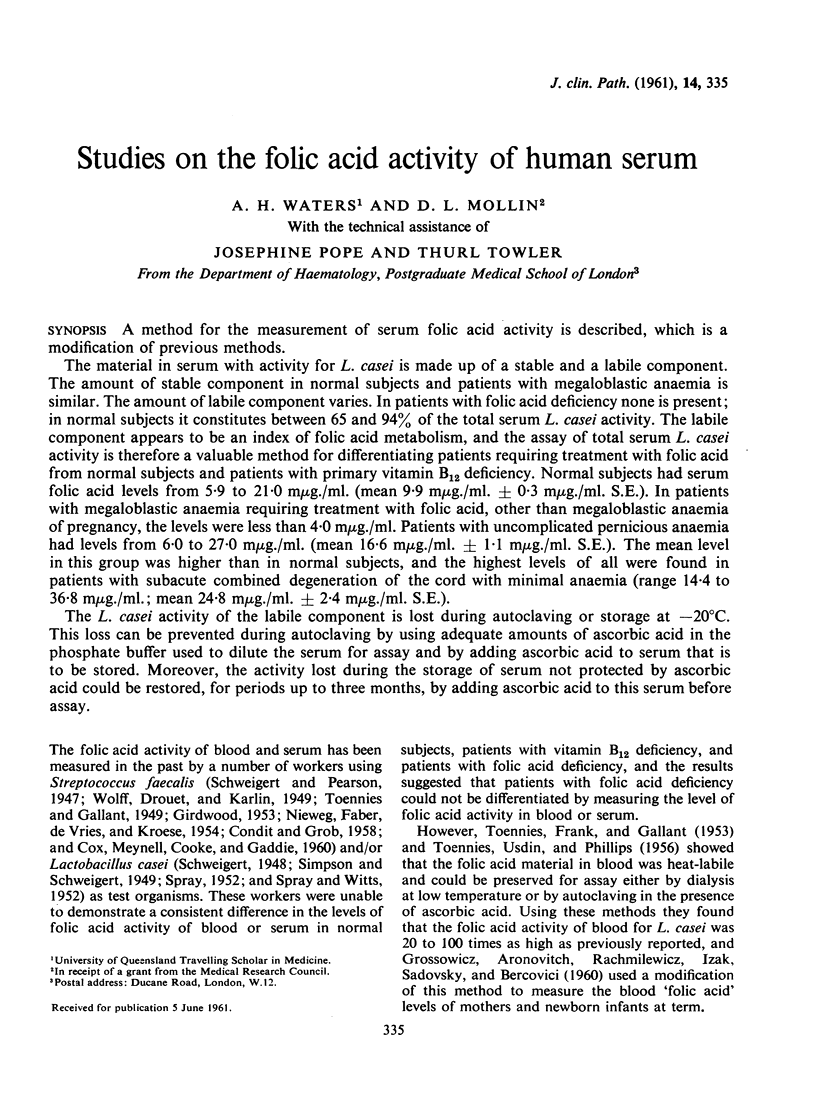
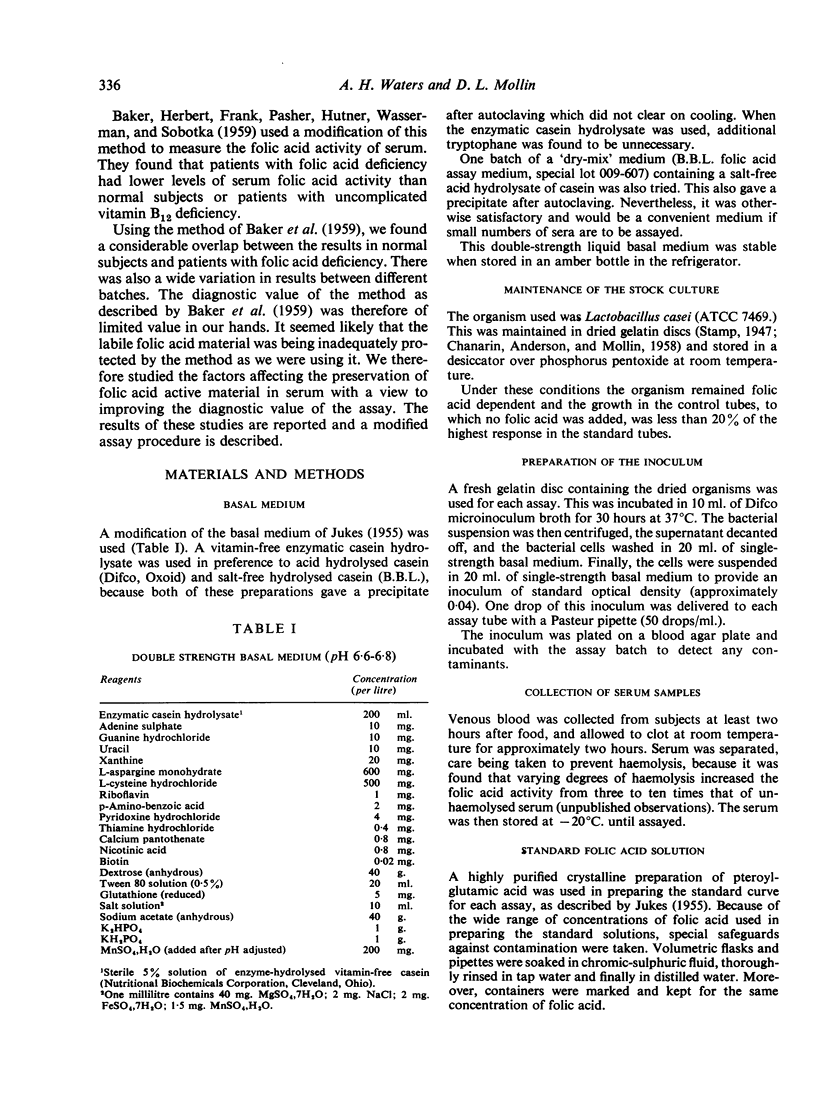
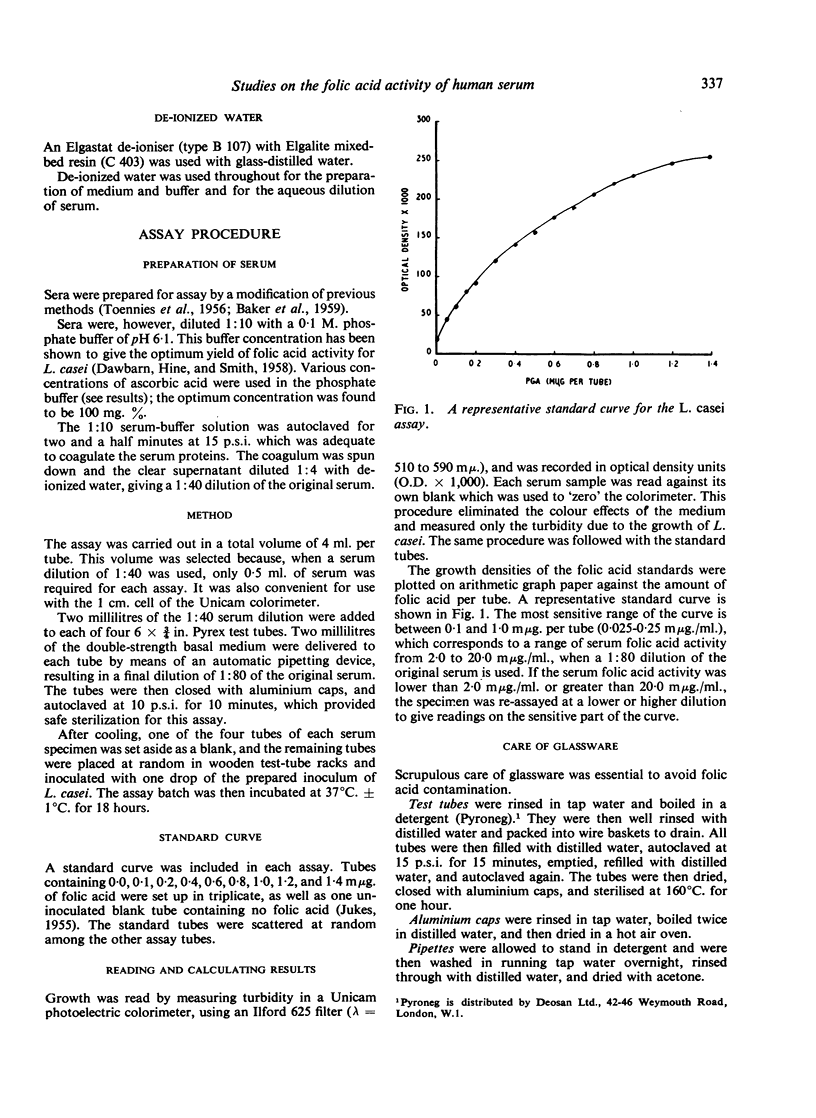
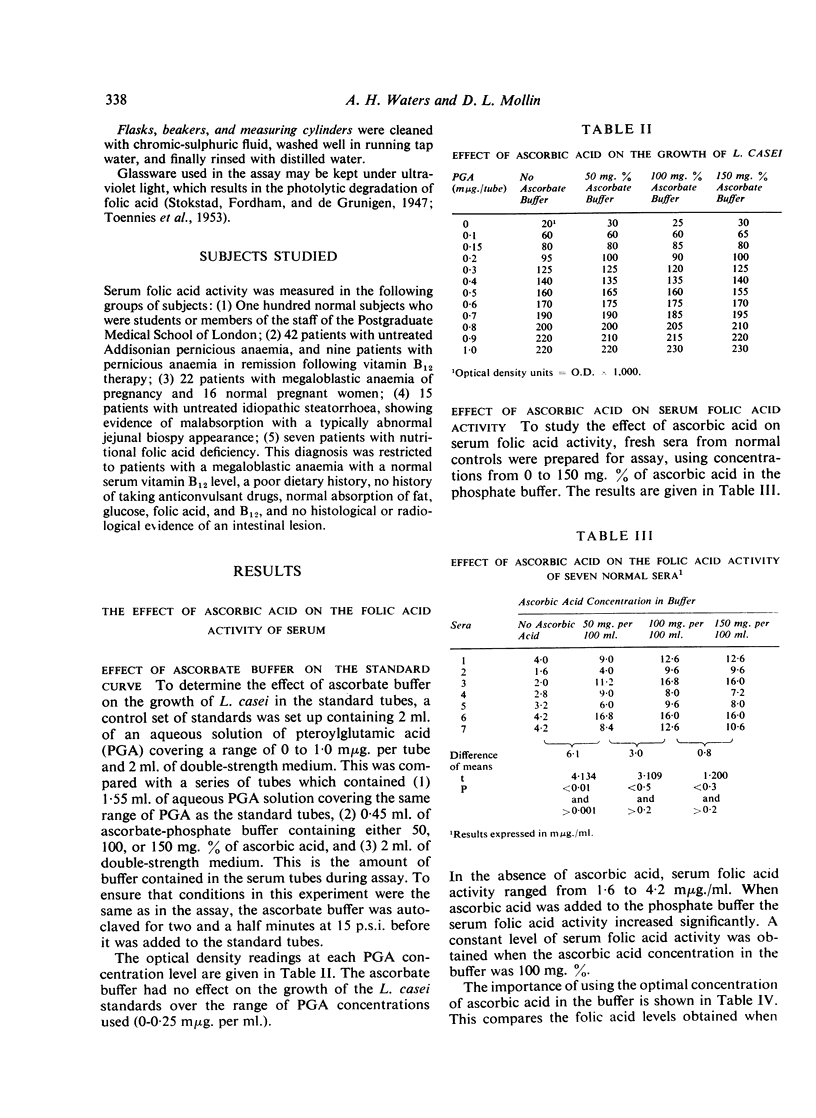
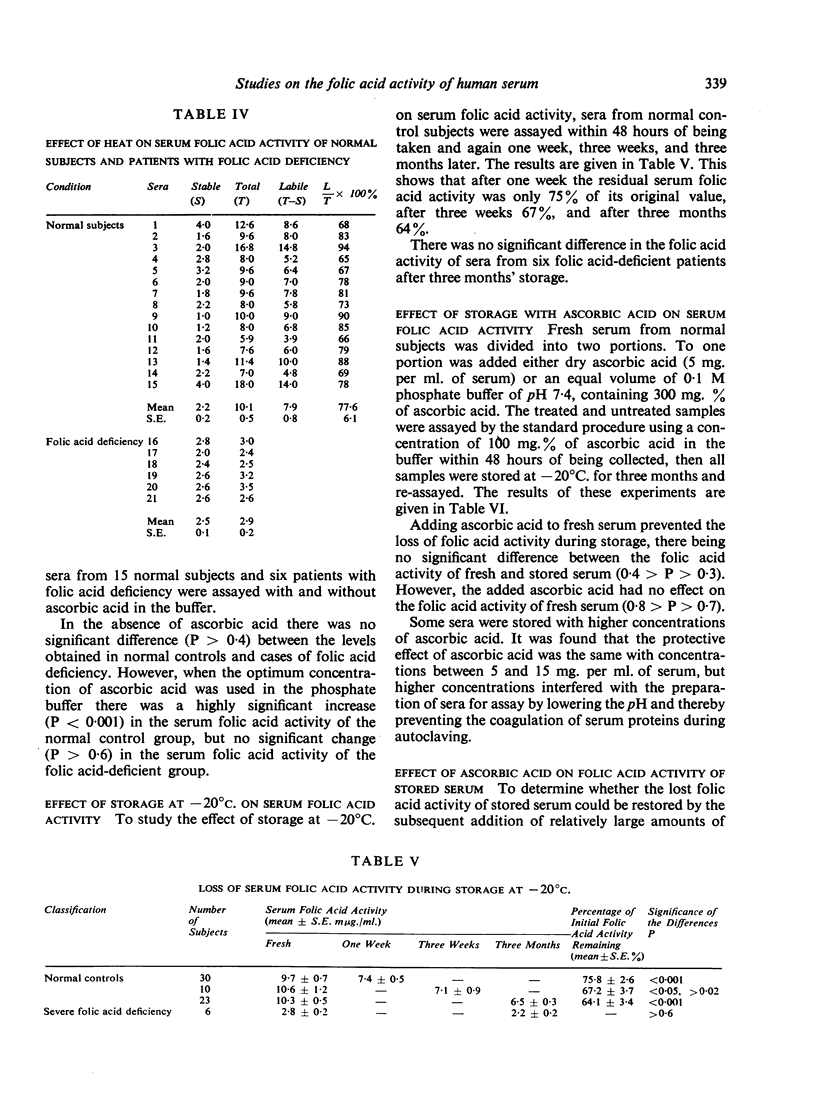
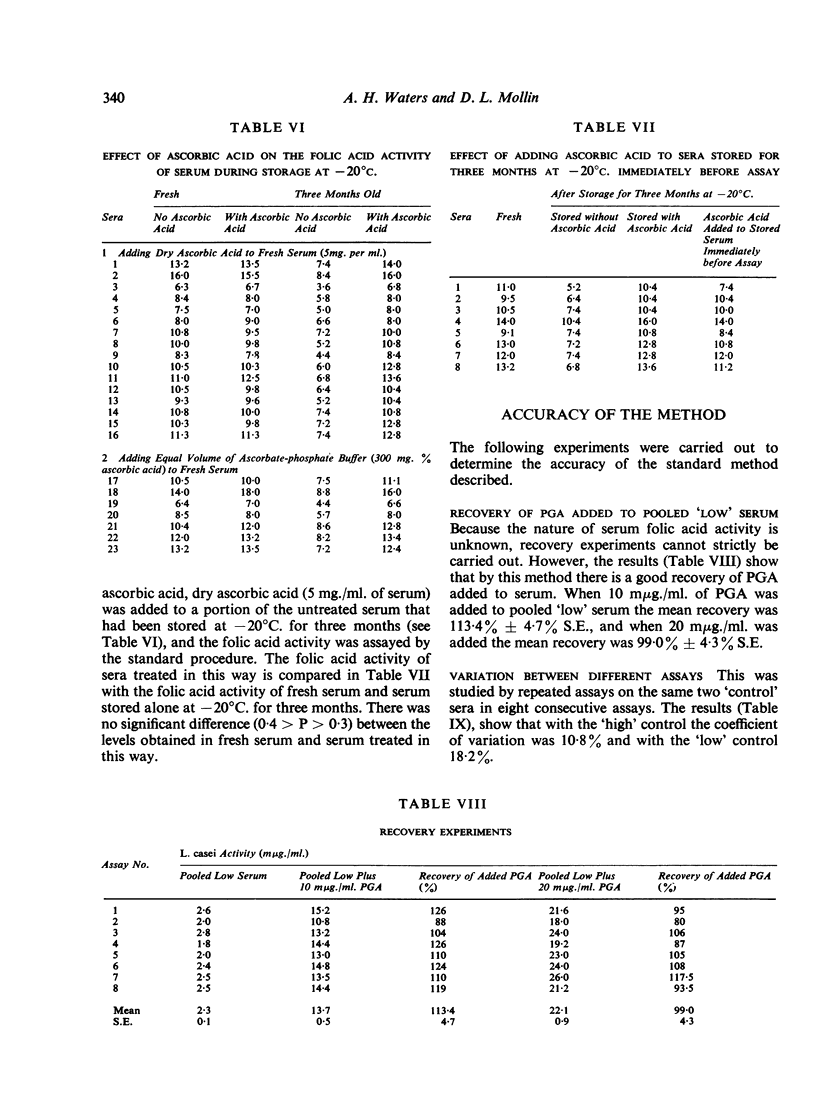
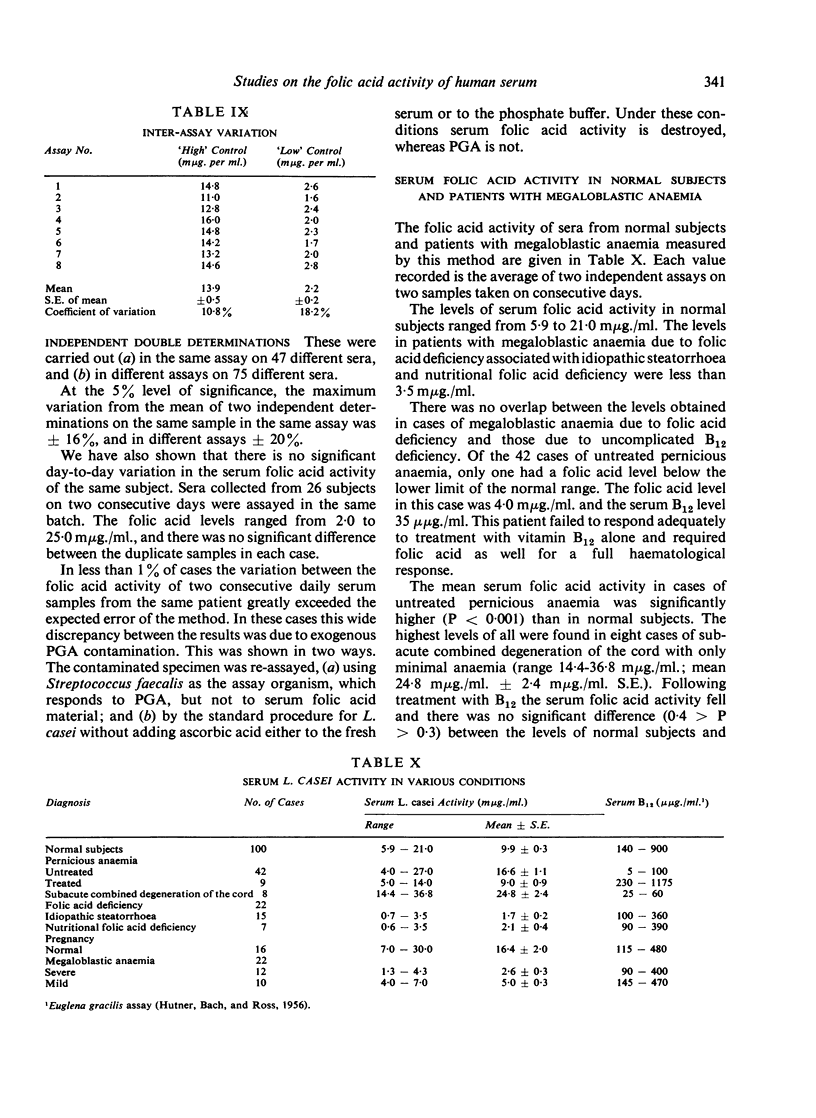
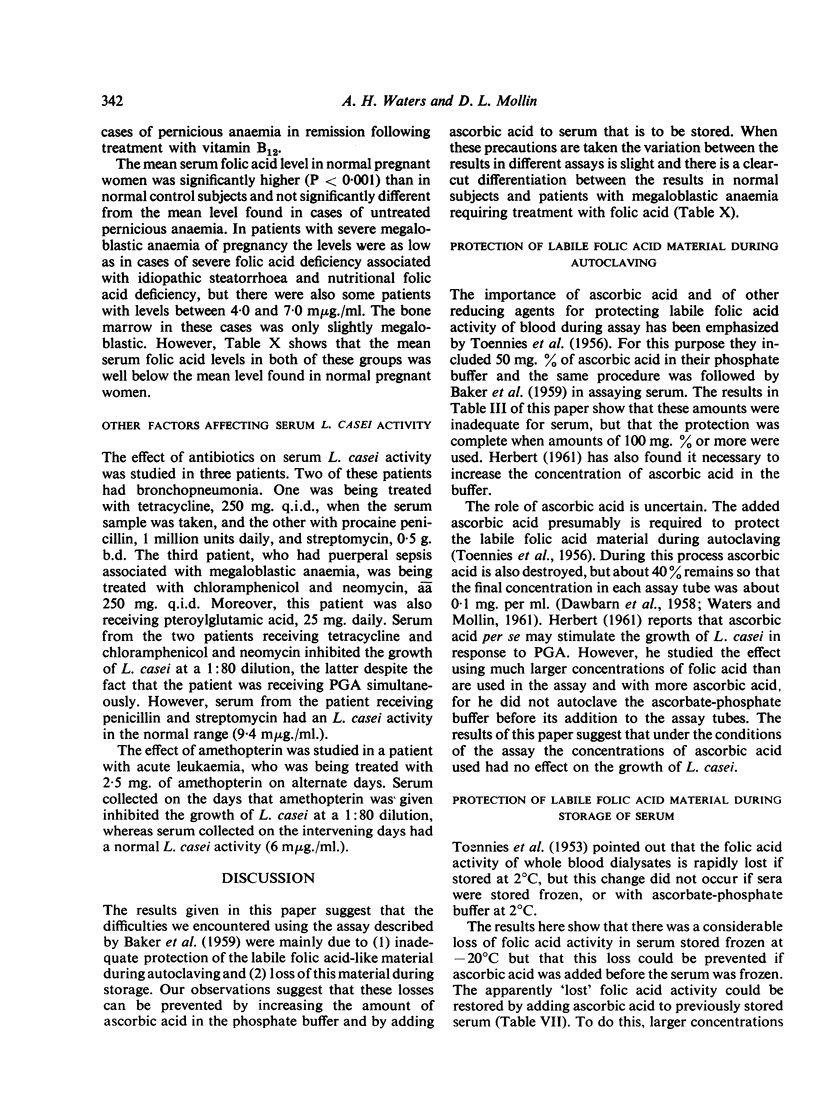
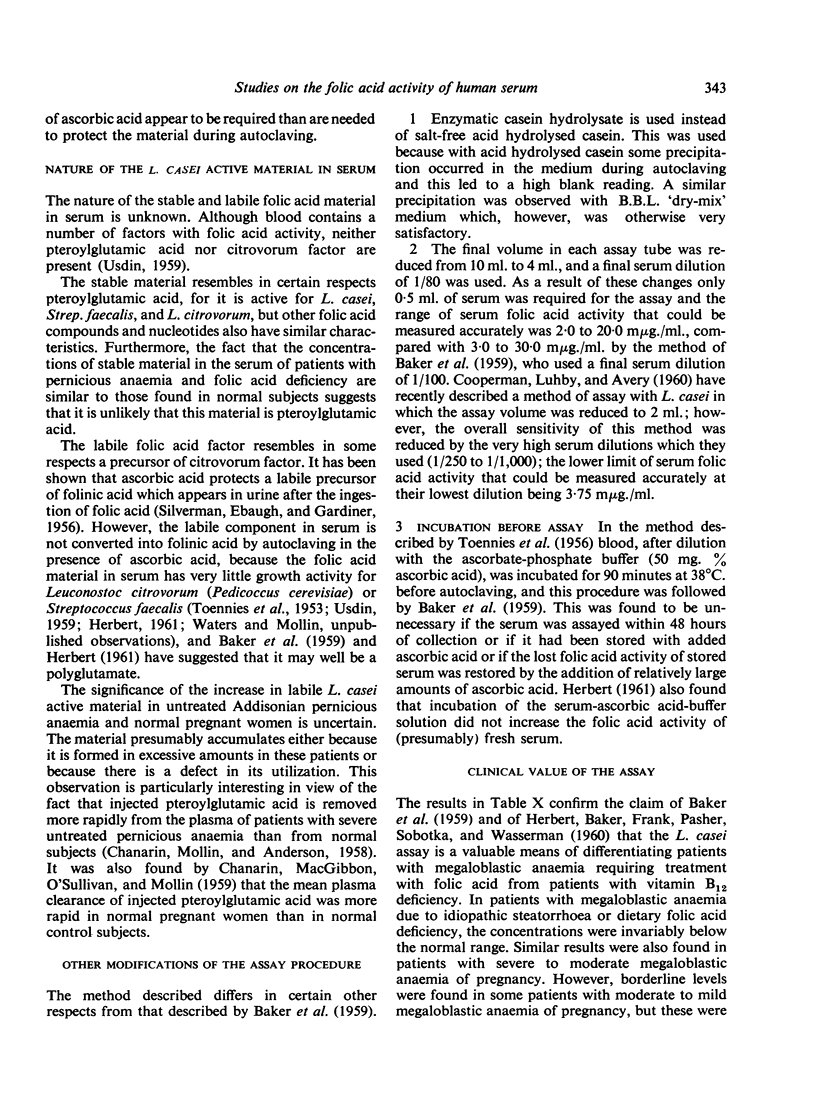
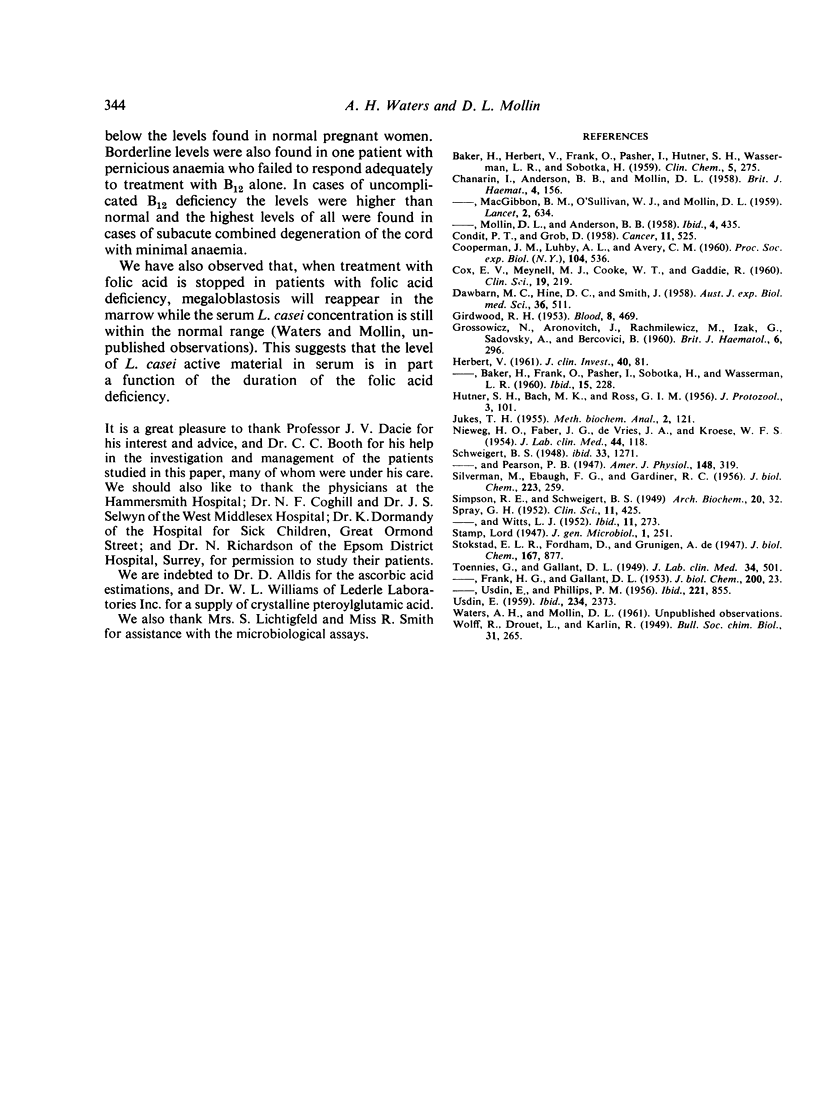
Selected References
These references are in PubMed. This may not be the complete list of references from this article.
- BAKER H., HERBERT V., FRANK O., PASHER I., HUTNER S. H., WASSERMAN L. R., SOBOTKA H. A microbiologic method for detecting folic acid deficiency in man. Clin Chem. 1959 Aug;5(4):275–280. [PubMed] [Google Scholar]
- CHANARIN I., ANDERSON B. B., MOLLIN D. L. The absorption of folic acid. Br J Haematol. 1958 Apr;4(2):156–166. doi: 10.1111/j.1365-2141.1958.tb03846.x. [DOI] [PubMed] [Google Scholar]
- CHANARIN I., MACGIBBON B. M., O'SULLIVAN W. J., MOLLIN D. L. Folic-acid deficiency in pregnancy. The pathogenesis of megaloblastic anaemia of pregnancy. Lancet. 1959 Oct 24;2(7104):634–639. doi: 10.1016/s0140-6736(59)91409-6. [DOI] [PubMed] [Google Scholar]
- CHANARIN I., MOLLIN D. L., ANDERSON B. B. The clearance from the plasma of folic acid injected intravenously in normal subjects and patients with megaloblastic anaemia. Br J Haematol. 1958 Oct;4(4):435–446. doi: 10.1111/j.1365-2141.1958.tb06045.x. [DOI] [PubMed] [Google Scholar]
- CONDIT P. T., GROB D. Studies on the folic acid vitamins. I. Observations on the metabolism of folic acid in man and on the effect of aminopterin. Cancer. 1958 May-Jun;11(3):525–536. doi: 10.1002/1097-0142(195805/06)11:3<525::aid-cncr2820110311>3.0.co;2-8. [DOI] [PubMed] [Google Scholar]
- COOPERMAN J. M., LUHBY A. L., AVERY C. M. Serum folic acid activity by improved L. casei assay. Proc Soc Exp Biol Med. 1960 Aug-Sep;104:536–539. doi: 10.3181/00379727-104-25900. [DOI] [PubMed] [Google Scholar]
- COX E. V., MEYNELL M. J., COOKE W. T., GADDIE R. Folic acid activity during blood regeneration. Clin Sci. 1960 May;19:219–228. [PubMed] [Google Scholar]
- DAWBARN M. C., HINE D. C., SMITH J. Folic acid activity in the liver of sheep. I. The measurement of folic acid and citrovorum factor. Aust J Exp Biol Med Sci. 1958 Dec;36(6):511–528. doi: 10.1038/icb.1958.56. [DOI] [PubMed] [Google Scholar]
- EBAUGH F. G., Jr, GARDINER R. C., SILVERMAN M. The nature of labile citrovorum factor in human urine. J Biol Chem. 1956 Nov;223(1):259–270. [PubMed] [Google Scholar]
- GIRDWOOD R. H. Some aspects of the metabolism of antimegaloblastic substances in man. Blood. 1953 May;8(5):469–485. [PubMed] [Google Scholar]
- GROSSOWICZ N., ARONOVITCH J., RACHMILEWITZ M., IZAK G., SADOVSKY A., BERCOVICI B. Folic and folinic acid in maternal and foetal blood. Br J Haematol. 1960 Jul;6:296–302. doi: 10.1111/j.1365-2141.1960.tb06246.x. [DOI] [PubMed] [Google Scholar]
- HERBERT V., BAKER H., FRANK O., PASHER I., SOBOTKA H., WASSERMAN L. R. The measurement of folic acid activity in serum: a diagnostic aid in the differentiation of the megaloblastic anemias. Blood. 1960 Feb;15:228–235. [PubMed] [Google Scholar]
- HERBERT V. The assay and nature of folic acid activity in human serum. J Clin Invest. 1961 Jan;40:81–91. doi: 10.1172/JCI104240. [DOI] [PMC free article] [PubMed] [Google Scholar]
- JUKES T. H. Assay of compounds with folic acid activity. Methods Biochem Anal. 1955;2:121–151. doi: 10.1002/9780470110188.ch5. [DOI] [PubMed] [Google Scholar]
- NIEWEG H. O., FABER J. G., DE VRIES J. A., KROESE W. F. The relationship of vitamin B12 and folic acid in megaloblastic anemias. J Lab Clin Med. 1954 Jul;44(1):118–132. [PubMed] [Google Scholar]
- PHILLIPS P. M., TOENNIES G., USDIN E. Precursors of the folic acid-active factors of blood. J Biol Chem. 1956 Aug;221(2):855–863. [PubMed] [Google Scholar]
- SPRAY G. H. The utilisation of folic acid from natural sources. Clin Sci. 1952 Nov;11(4):425–428. [PubMed] [Google Scholar]
- TOENNIES G., FRANK H. G., GALLANT D. L. On the folic acid activity of human blood. J Biol Chem. 1953 Jan;200(1):23–30. [PubMed] [Google Scholar]
- USDIN E. Blood folic acid studies. VI. Chromatographic resolution of folic acid-active substances obtained from blood. J Biol Chem. 1959 Sep;234:2373–2376. [PubMed] [Google Scholar]


